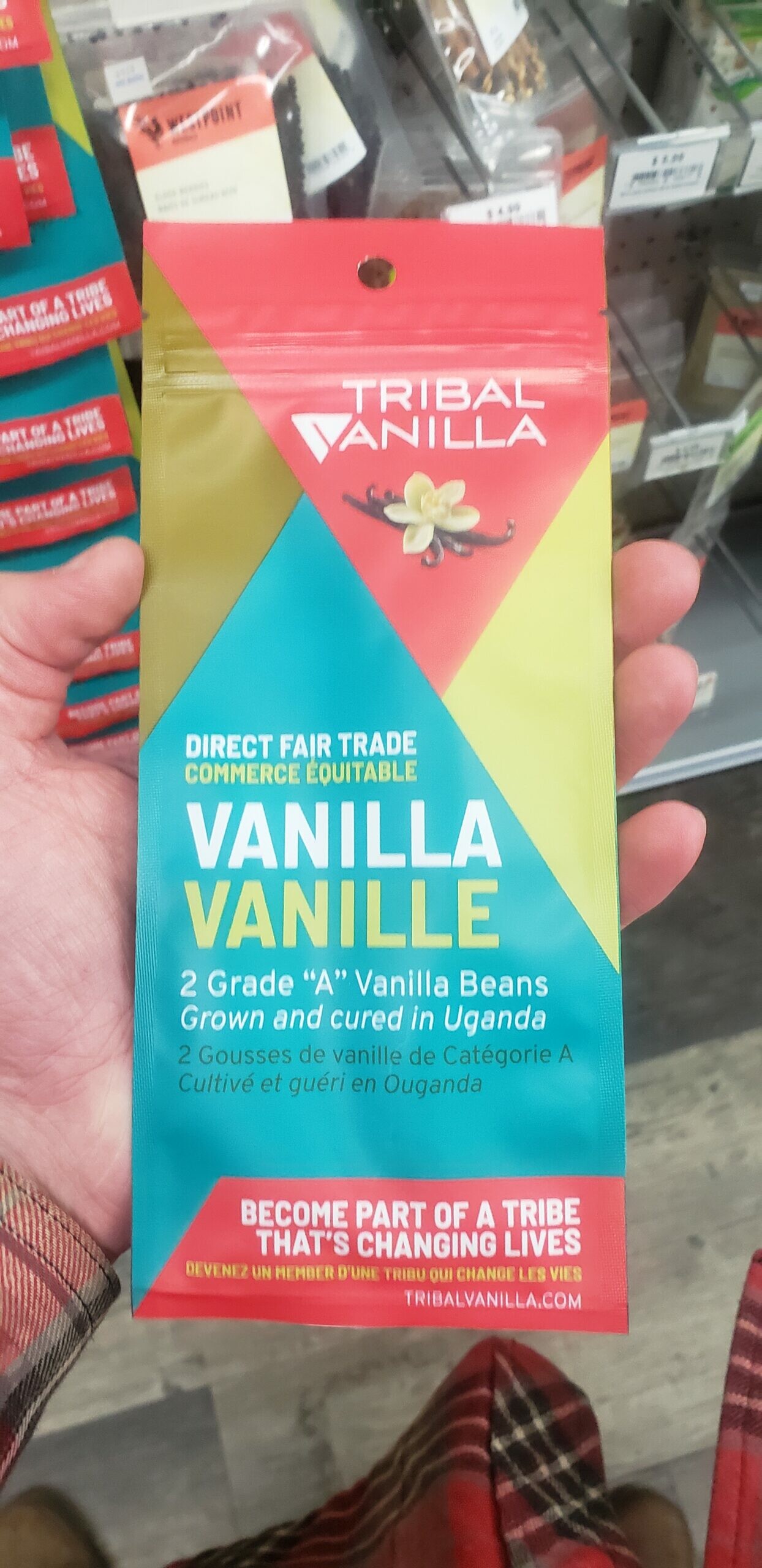
{-13.89101552499529,49.912232069921885}
How is it produced?
Vanilla is produced by pollinating the vanilla flower during its very brief window where it is able to be pollinated, which is often done by hand as native pollinators are only found in Central America and most vanilla today is grown in Madagascar (Danone, 2017; Observatory of Economic Complexity, 2023; Zhu, 2018). The vanilla beans are picked before they ferment, then sold to middlemen or “commissionaires”, who oversee the processing of the beans (Encyclopedia Brittanica, 2023; Kacungira, 2018).
Describe the supply chain to the store shelf in Canada:
The vanilla beans are picked before they ferment, then sold to middlemen or “commissionaires”, who oversee the processing of the beans (Encyclopedia Brittanica, 2023; Kacungira, 2018). The beans are sweated and dried several times before being slowly dried out completely in a process that can take up to a month (Kacungira, 2018; Sethi, 2017). The commissionaires then pass the beans on to international distributors who package them and ship them to the stores where they can be bought, or to where they can be incorporated into products such as high-end ice cream (Kacungira, 2018; The Madagascar Vanilla Company, 2023).
What is the power balance between the producer and seller?
The power balance is definitely on the side of the international distributors and sellers. This is shown by how much influence they have over the commissionaires, which is translated on to the people. The distributors pay the commissionaires in advance in return for a promise of a certain amount of beans by a certain time (Kacungira, 2018). This leads the commissionaires to pressure the farmers into picking their beans early and compromising quality and value (and the price the farmer receives) to meet their quotas (Kacungira, 2018).
Can you recommend changes to the system to improve the balance?
Increased government oversight of commissionaires might help with this, and the government is already putting in measures to prevent early picking of beans (Kacungira, 2018). Increased policing in the remote communities vanilla is grown in would also help prevent theft and give the farmers a more consistent crop that would allow them to be less disparate and reliant on the commissionaires for any sort of income, which could also help balance some of that power dynamic.
References/Resources:
Danone. (2017). Transforming the vanilla supply chain in Madagascar. Medium. https://medium.com/@Danone/transforming-the-vanilla-supply-chain-in-madagascar-99e98dcabe5f
Encyclopedia Britannica. (2023). Vanilla: Plant and flavouring. Encyclopedia Britannica. https://www.britannica.com/plant/vanilla
Kacungira, N. (2018). Fighting the vanilla thieves of Madagascar. BBC. https://www.bbc.co.uk/news/resources/idt-sh/madagascar_vanillla
Observatory of Economic Complexity. (2023). Vanilla in Madagascar. OEC. https://oec.world/en/profile/bilateral-product/vanilla/reporter/mdg#subnational-data
Sethi, S. (2017). The bittersweet story of vanilla. Smithsonian magazine. https://www.smithsonianmag.com/science-nature/bittersweet-story-vanilla-180962757/
The Madagascar Vanilla Company. (2023). Vanilla laws, customs, regulations in Madagascar. Madagascar Vanilla Company. https://www.madagascarvanillacompany.com/vanilla-laws-customs-regulations-in-madagascar/
Zhu, A. (2018). Hot money, cold beer: Navigating the vanilla and rosewood export economies in northeastern Madagascar. American Ethnologist, 45(2), pp. 253-267.

